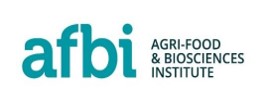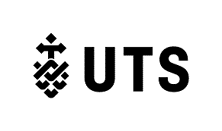RePhoKUs is a collaboration between Lancaster University, the University of Leeds, Agri-Food and Biosciences Institute (AFBI), University of Technology Sydney (UTS), UK Centre for Ecology and Hydrology (CEH), and the N8 AgriFood Programme.






Why is this research needed?
Phosphorus (P) is an essential nutrient required for crop and livestock production, but the global reserves of phosphate rock (PR) from which fertilisers and feeds are derived are a finite critical resource. Phosphorus cannot be made chemically and the UK has no PR reserves of its own. UK agriculture is therefore entirely dependent on P imports of fertilisers, feeds and foods, which are becoming increasingly volatile in cost. A future scarcity of P (either locally or globally), or a significant rise in the costs of P imports, therefore threaten the future security and resilience of the UK food system, but this vulnerability has not previously been evaluated. Brexit may increase the UK vulnerability to future P supply due to exclusion from EU trade agreements. The use of P within UK agriculture is also very inefficient and leads to large wastage, and loss of P to inland and coastal waters causing nutrient pollution or eutrophication. Such losses and the resulting pollution are expected to be exacerbated by climate change. Eutrophication is very costly to society and devalues many ecosystem services linked to water quality including water quantity for drinking, biodiversity and recreation. Regulatory standards to control eutrophication are based on P, and it is therefore critically important to improve the sustainability of UK farming by improving the management of P across the whole food chain. Better stewardship of P has a double benefit: it can firstly increase the resilience of the UK food system to P shocks by reducing UK reliance on P imports and secondly optimize the intensification of agriculture with minimal impact on water quality and increase the value of the ecosystem services dependent on water quality.
What will this project achieve?
In this project, an interdisciplinary research team covering the biological, environmental and socio-economic sciences aims to quantify the vulnerability of UK agriculture and the UK food system to a future P scarcity and assess the thresholds at which P scarcity might impact on agricultural production at farm, catchment and national scale. The work programme will develop and prioritise the adaptations that might overcome this vulnerability; for example through technological innovations to improve P use efficiency and reuse of secondary sources of P and the necessary institutional infrastructure to support these. In parallel, the project will identify the biophysical, technological, socio-economic and institutional barriers to implementing improved P stewardship within catchments (for example by using less, recycling more and lowering end-user demand). This will be achieved through an in-depth analysis of the catchment heterogeneity that influences how P inputs affect agriculture, water quality and cascading ecosystem services and an assessment of the adaptive capacity of stakeholders to implement optimal P stewardship solutions. A multi-actor platform involving stakeholders at local to global scales will ensure end-user engagement and integration for maximum research impact. The project will deliver the first P vulnerability assessment for the UK food chain and identify potential adaptation strategies for improved P stewardship to help maximise the resilience and sustainability of the UK food chain.
Why is this research beneficial to our current scientific understanding?
Previous catchment science research has concentrated on determining nutrient pressures and fluxes within individual catchments, but very little research has been conducted on the underlying factors governing the sensitivity of catchments to nutrient pressure. Buffering capacity is a defining concept with which to examine these factors (Doody et al., 2016), and the science advances made in this project in developing metrics for catchment buffering capacity will be of benefit to other natural scientists (hydrologists, biogeochemists and ecologists) working on catchment nutrient dynamics, water quality and landscape management.
Substance flow analysis (SFA) is increasingly being used to quantify the stores and flows of P at national scales to provide the basis for developing strategies for a P circular economy. However, the development of SFA approaches to quantify secondary P resources at catchment and regional scale is more challenging due to increased data uncertainty and variable boundaries for assessment. Overcoming these limitations will make a significant contribution to expanding the usefulness of SFA approaches to assessing sustainable strategies for nutrient management by land-based consultants.
Legacy soil P has already been identified as the largest secondary P store potentially exploitable for P reuse and to buffer the impact of P shocks, but there is little information on the value of this resource as a fertiliser substitute, or the factors that determine its variability in value across different landscapes. Our investigation of legacy soil P availability to crops and the metrics developed to characterise this value, will be of benefit to global soil scientists investigating thresholds of soil P for balancing crop needs and the delivery of good water quality.
The project will deliver a comprehensive interdisciplinary template or framework for assessing P vulnerability across different scales. This vulnerability framework is potentially suitable for use by a range of other academics who can adapt and apply the framework to their own research areas (i.e. not just P) and in other countries and regions, both high income and low income. The priority research gaps identified by the project, for example in recommended 5R and capacity-building strategies, will also provide opportunity for further advances in science and technology and the socio-economic sciences; for example technical efficiencies of recycling technologies, or improved information flow along the reverse phosphorus value-chain from waste manager to farmer.
The socio-economic advances made in the transdisciplinary co-construction of catchment and national solutions bridging the natural sciences and socio-economic sciences will be of value to other social sciences specialists working on farmer’s behaviour, adaptive capacity and transformative change. The successful application of scenario planning and social learning loops to the P issue will benefit a new generation of interdisciplinary researchers who will be able to learn from the process.
